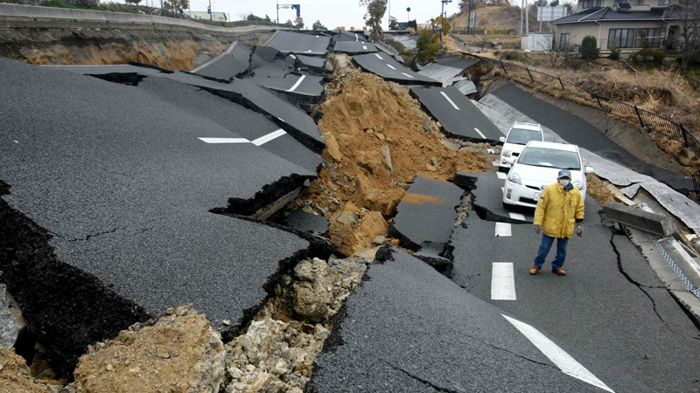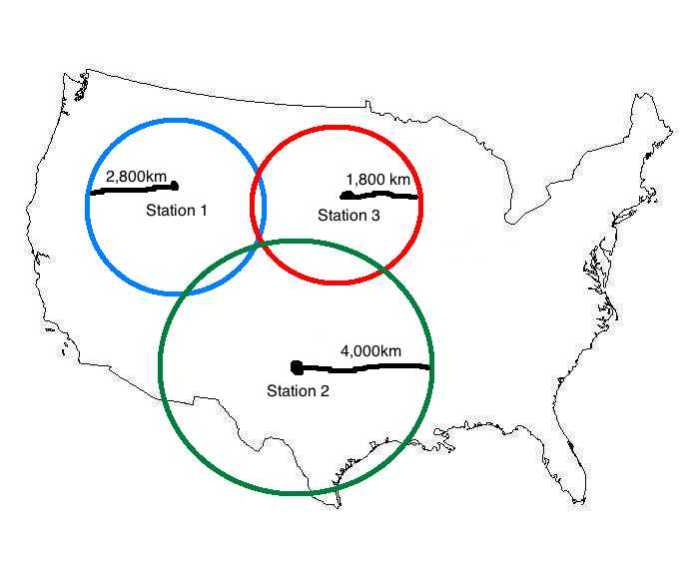Locating the epicenter of an earthquake lab answers – Unveiling the intricacies of earthquake epicenter location, this lab delves into the depths of seismic wave analysis, triangulation techniques, and error analysis. Join us on an exploration of the methods and applications that empower us to pinpoint the source of these formidable natural phenomena.
Seismic Wave Analysis

Seismic waves are vibrations that travel through the Earth’s layers as a result of an earthquake or other seismic event. They are generated by the sudden release of energy at the earthquake’s source and propagate outward in all directions.
Types of Seismic Waves
- P-waves (Primary waves):Compressional waves that travel fastest and are the first to arrive at a seismic station.
- S-waves (Secondary waves):Shear waves that travel slower than P-waves and arrive at a seismic station after P-waves.
- Surface waves:Waves that travel along the Earth’s surface and are the slowest and most destructive type of seismic wave.
Seismographs
Seismographs are instruments that record seismic waves. They consist of a sensor that detects ground motion and a recorder that converts the motion into an electrical signal. Seismographs are installed at seismic stations around the world to monitor seismic activity.
Locating the Epicenter: Locating The Epicenter Of An Earthquake Lab Answers
The epicenter of an earthquake is the point on the Earth’s surface directly above the earthquake’s source. It can be determined using the principle of triangulation, which involves measuring the arrival times of seismic waves at multiple seismic stations.
Distance-Time Relationship
The distance between an earthquake’s epicenter and a seismic station can be calculated using the distance-time relationship. This relationship is based on the fact that seismic waves travel at different speeds through different Earth layers.
Triangulation
By knowing the arrival times of seismic waves at multiple seismic stations, it is possible to calculate the distance from each station to the epicenter. These distances can then be used to triangulate the epicenter’s location.
Step-by-Step Procedure, Locating the epicenter of an earthquake lab answers
- Record the arrival times of seismic waves at multiple seismic stations.
- Calculate the distance from each station to the epicenter using the distance-time relationship.
- Plot the distances on a map and draw circles around each station with a radius equal to the distance to the epicenter.
- The point where the circles intersect is the epicenter of the earthquake.
Error Analysis

There are several sources of error in locating the epicenter of an earthquake, including:
- Seismic station distribution:The accuracy of the epicenter determination depends on the distribution of seismic stations around the earthquake’s source.
- Wave propagation complexity:Seismic waves can travel through complex paths, which can affect the accuracy of the distance-time relationship.
- Data quality:The quality of the seismic data can affect the accuracy of the epicenter determination.
Error analysis is used to identify and minimize the sources of error in locating the epicenter of an earthquake. This involves analyzing the data from multiple seismic stations and using statistical techniques to estimate the uncertainty in the epicenter’s location.
Applications of Epicenter Location

Locating the epicenter of an earthquake is important for several reasons, including:
- Earthquake hazard assessment and mitigation:Knowing the location of an earthquake’s epicenter can help to assess the potential hazard to nearby communities and develop mitigation strategies.
- Understanding earthquake source mechanisms and tectonic processes:The location of an earthquake’s epicenter can provide insights into the earthquake’s source mechanism and the tectonic processes that caused it.
- Earthquake early warning systems:Epicenter location information is used in earthquake early warning systems to provide timely warnings to communities at risk.
- Disaster response efforts:The location of an earthquake’s epicenter can help to guide disaster response efforts and provide assistance to affected communities.
Query Resolution
What is the principle behind locating an earthquake epicenter?
The principle of triangulation is employed to determine the epicenter. By measuring the time difference between the arrival of seismic waves at multiple seismic stations, the distance to the epicenter can be calculated, and the epicenter can be located by intersecting these distances.
How does error analysis impact epicenter determination?
Error analysis plays a crucial role in assessing the accuracy of epicenter estimates. Factors such as seismic station distribution, wave propagation complexity, and data quality can introduce uncertainties. Error analysis helps quantify these uncertainties and improve the reliability of epicenter determinations.